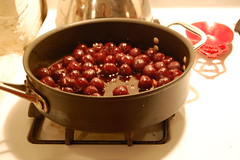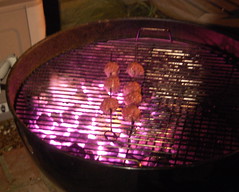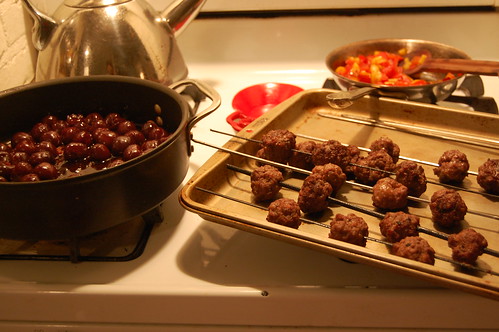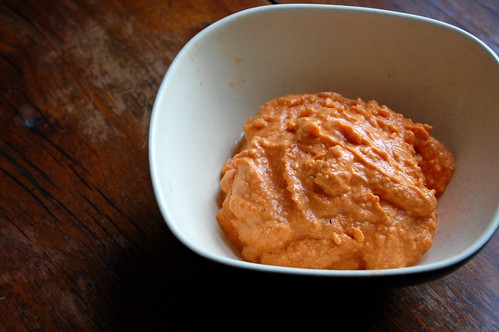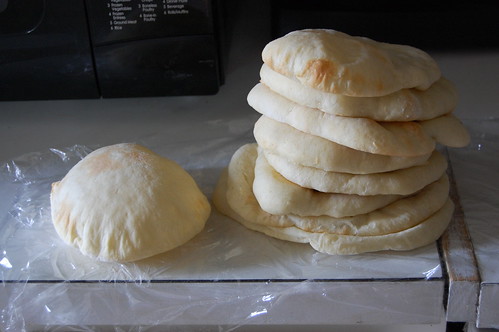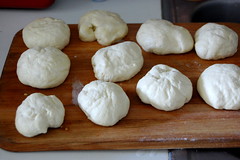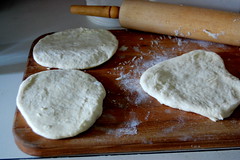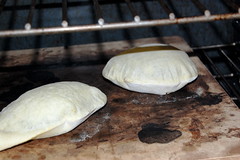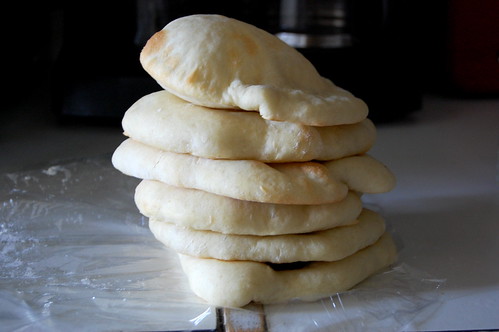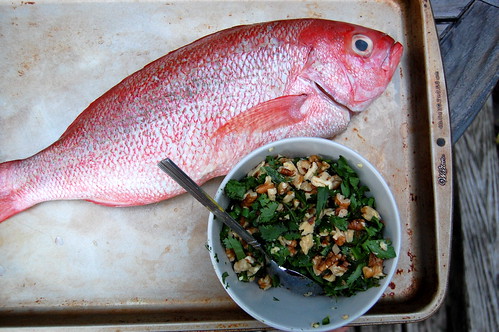
With an entire section of our library devoted to cookbooks, some of which often go unused for months (umm, years) at a time, I will occasionally force myself to cook something out of one of my old cookbooks from time to time. It's a good deterrent from buying that big new glossy book you want that you'll probably cook two recipes out of and then relinquish to the shelf.
Flipping though Paula Wolfert's "Cooking of the Eastern Mediterranean," I spotted a recipe called "pepper fish" that I thought looked good. Later, when I checked the recipe again, I realized, with the sort of slow realization of seeing something through frosted glass, that this was in fact a classic Lebanese dish from Tripoli known as samkeh harra, or spicy fish.
While Ms. Wolfert's work done on Moroccan cuisine is unparalleled in its accuracy and detail, her work in other countries often strikes me as odd. Her Levantine recipes tend to wring a false note with me, as if someone came to America for a few weeks and discovered a recipe they called "beef patty with sesame bread and sweet tomato reduction." Aka, a hamburger.
But I digress. I decided to go ahead and make the classic samkeh harra, which is a red snapper stuffed with chopped herbs, walnuts, and chile peppers, and topped with a garlicky tahini sauce. This is a celebration dish in the best sense, not that it is particularly complicated or difficult, but that it just feels festive to eat and serve. It is traditionally served with long grain rice (a sort of red wild rice is traditional) and with all the herbs and nuts, practically makes a meal of itself. When you serve it make sure to top everyone's fish portion with some more of of the tahini sauce and herb-chile mixture.
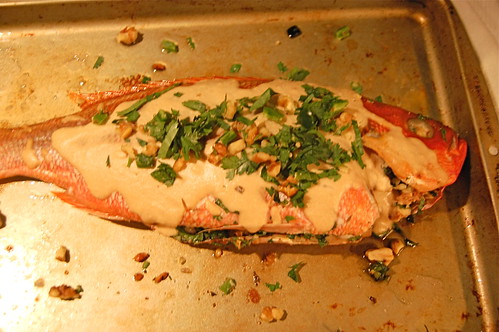
Samkeh Harra (Spicy Fish from Tripoli)
This festive dish is found along the Northern coast of Lebanon and the coast of Syria. Snapper is traditional, but a similar fish can work, and if you dislike the idea of a whole fish, it can be made with two fillets as well (adjust the baking time accordingly). Serve with wild rice.
1 red snapper (about 3-4 pounds), scaled and gutted
1 bunch cilantro, chopped
1 c walnuts, chopped
2 chilies (jalapenos are fine), finely chopped, seeds set aside
salt and pepper
tahini sauce:
1 c tahini
2 large garlic cloves, mashed in a mortar and pestle
1-1/2 c water
juice of 3 lemons
1 tsp cumin
1. Preheat oven to 375 F. Combine the chopped cilantro, walnuts, chilies, and salt and pepper. (If you don't want to do the chopping, you can also toss the ingredients in the food processor and give it a few pulses, everything should be just coarsely chopped). Add in the reserved chile seeds, as few or as many as you want depending on your tolerance, you can omit them if desired.
2. Make three slashes on each side of the fish with a knife and rub the fish inside and out with olive oil and salt. Stuff 2/3 of the herb mixture into the cavity of the fish. Place on a baking sheet and roast for 25 minutes, or until the fish is slightly under-done.
3. Meanwhile combine the tahini sauce ingredients in a saucepan and stir until very smooth. Place over medium heat and heat the sauce, stirring, just until warmed.
4. After the fish has cooked for 25 minutes, pour half of the tahini sauce over the fish, and return to the oven for 10 more minutes, or until the fish flakes easily.
5. To serve, fillet the fish. Place some fish on a plate, top with some reserved tahini sauce, and top with some of the stuffing from inside the fish. Place extra bowls of tahini sauce and stuffing mixture on table for people to use as they like.


